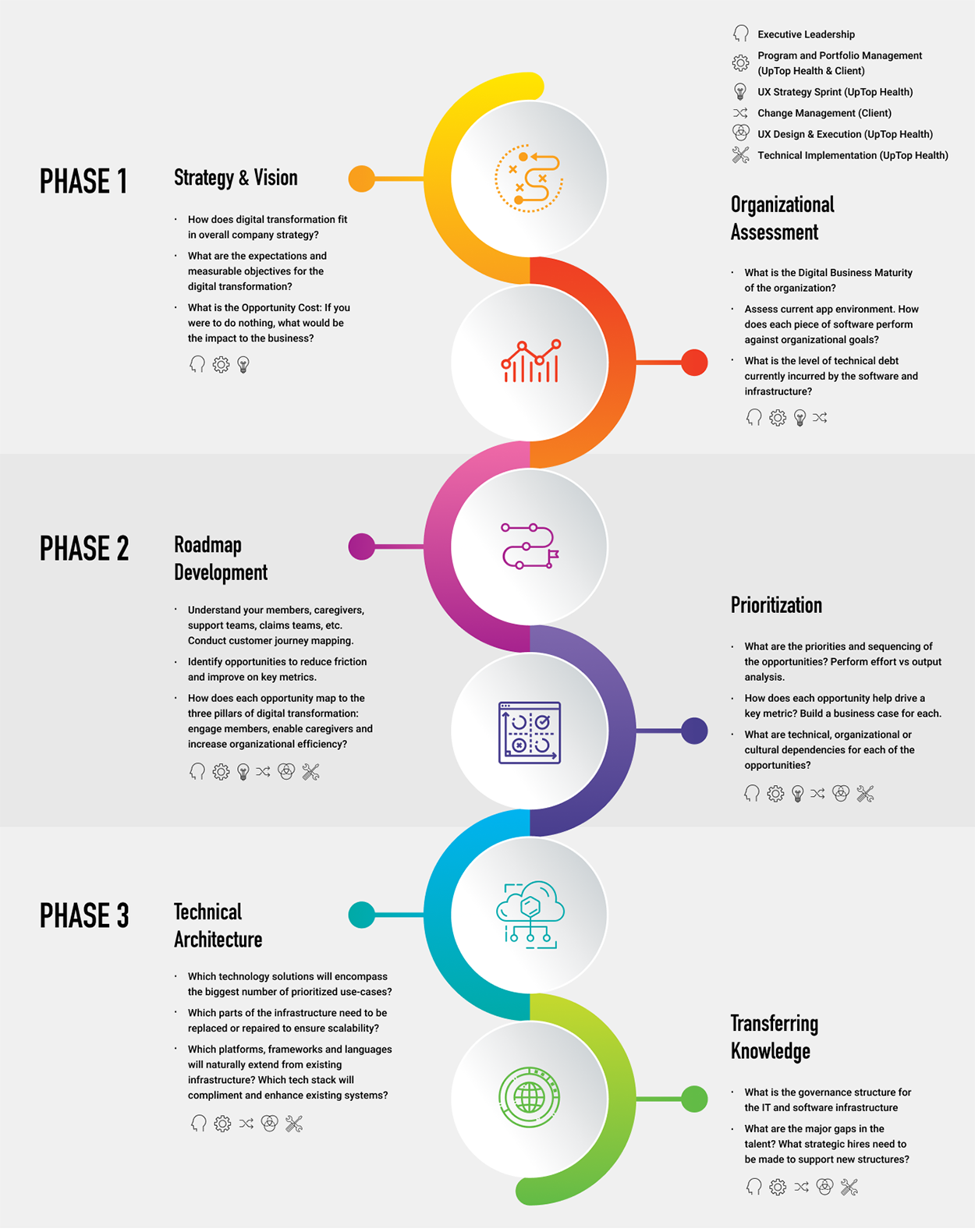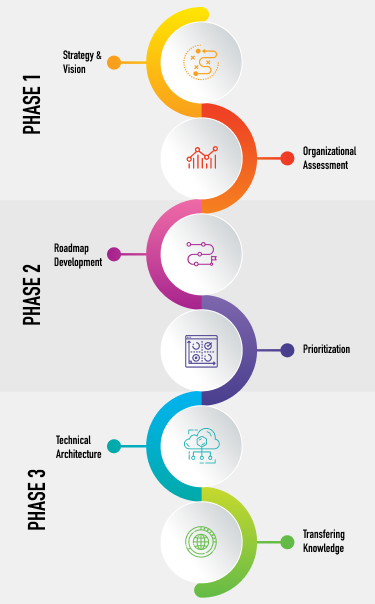Your healthcare organization is powered by digital technology. It’s at the heart of how you manage claims, communicate with members, and negotiate with healthcare providers. It follows, then, that your digital systems shouldn’t be set in stone. As your business evolves, so too should your technology. The simple truth is that all healthcare organizations should periodically reevaluate their digital strategies and transform their infrastructure to stay competitive.
The upshot? Whether you recently rebuilt your digital infrastructure from the ground up or are making do with an outdated legacy system, digital transformation is in your future. It’s not a matter of if but when.
And here’s the thing: Digital transformation is never easy. After all, healthcare digital systems are unfailingly complex, with plenty of interdependencies to keep you (and your IT team) on your toes. But it can be especially tricky for payer organizations, who must ensure a smooth transition for members and healthcare providers alike.
So when is digital transformation warranted? And how can you map out a strategic plan that enables you to seamlessly revamp your digital infrastructure and achieve your business goals? Here’s how to get started.
What is Digital Transformation in the Healthcare Industry, and Why Is It Necessary?
Chances are your IT team spends most of its time maintaining and optimizing your existing digital infrastructure, from your back-end systems to your front-end digital experiences. That’s great. But even the best maintenance plan won’t allow you to keep running on the same digital systems forever.
Digital transformation is what happens when you radically change your organization’s technology systems and software infrastructure. That could include anything from ditching a legacy system to revamping your member portal or designing a new mHealth app.
It’s important to note that digital transformation isn’t just about upgrading to the newest and most sophisticated tech. It’s about leveraging the right technologies to support your business goals, engage members, enable care teams, and drive operational efficiencies. So it makes sense that business needs are more likely to drive a transformation than “plain old” technical frustrations.
Specifically, a digital transformation of some kind may be in order if your existing tech prevents you from:
- Keeping up with the competition. Are your competitors leveraging new technologies in innovative ways that leave you sprinting to catch up? It may be time to reevaluate your digital offerings — and the underlying systems that support them.
- Satisfying your customers’ expectations. Consumer expectations for digital experiences only continue to rise. They’ve been indelibly shaped by digital apps and e-commerce. If your current tech stands in the way of a more modern user experience, a transformation is likely in order.
- Evolving your business model. The healthcare space is constantly changing. Big-picture trends (such as the ongoing shift toward value-based care) and current events (such as the coronavirus and the new emphasis it puts on telehealth) mean you must stay agile — even if that means pursuing digital transformation.
- Meeting regulatory requirements. The Centers for Medicare and Medicaid Services’ new Interoperability and Patient Access rule (CMS-9115-F) is revolutionizing the way healthcare organizations handle patient data across the healthcare spectrum. This and other regulatory requirements may force your hand when it comes to pursuing a digital transformation.
How to Create a Roadmap for Your Healthcare Organization’s Digital Transformation in 6 Steps
Navigating digital transformation is difficult because it isn’t business as usual. Not only does it mean learning or developing new backend and frontend systems, but it also means rethinking your established operational processes and delivery models. In that sense, a successful digital transformation is both technical and cultural. To do it right, you must create a detailed plan — a transformation roadmap that takes you from point A to point Z without getting lost along the way.


Feeling stumped? UpTop Health has developed a clear, structured process to guide your organization through your next digital transformation. This includes the following six phases:
- Strategy and vision. In this initial phase, we pinpoint exactly how your planned digital transformation fits within your overall company strategy. From there, we define what success looks like by putting expectations and measurable objectives around your digital initiative.
- Organizational assessment. Next, we assess your organization’s readiness and capacity to take on a digital transformation. Where do you currently stand in terms of business maturity as well as your existing software and technical infrastructure? What needs to happen in order to prepare your business for a successful transformation?
- Roadmap development. We get to know all your key internal and external stakeholders and conduct customer journey mapping exercises. As opportunities for digital transformation emerge, we measure them against their ability to engage members, enable caregivers, and increase organizational efficiency.
- Prioritization. During this phase, we use cost vs benefit analysis and other prioritization exercises to hone in on a best-fit solution to drive your digital transformation.
- Technical architecture. Now it’s time to hammer out the technical details of your digital transformation. Which parts of your existing infrastructure need to be redecorated, remodeled, or rebuilt? And which technology solutions will support the widest number of prioritized use cases?
- Transferring knowledge. In the final stage, we work with your team to ensure your transformed infrastructure is properly adopted and maintained. To do that, we make sure you have the right governance structure you need to guide your team in both the short and longterm. In addition, we advise you on whether and how to make strategic hires to support your new digital infrastructure.
Digital transformation is inevitable. And if you want to keep scaling and evolving your business, you may need to consider it sooner rather than later. The stakes are high. Get it wrong, and you could sink time and money into a solution that doesn’t really meet your needs or further your objectives. The good news? With the right strategy and plan to guide you, you can revamp your digital infrastructure and unleash your business’s ability to take it to the next level. If you’re ready to get started, let’s talk.